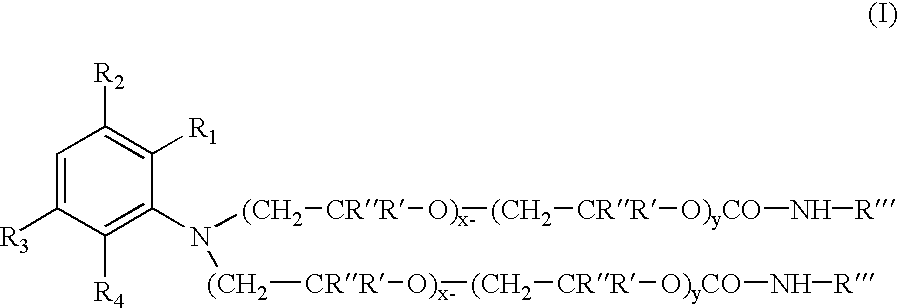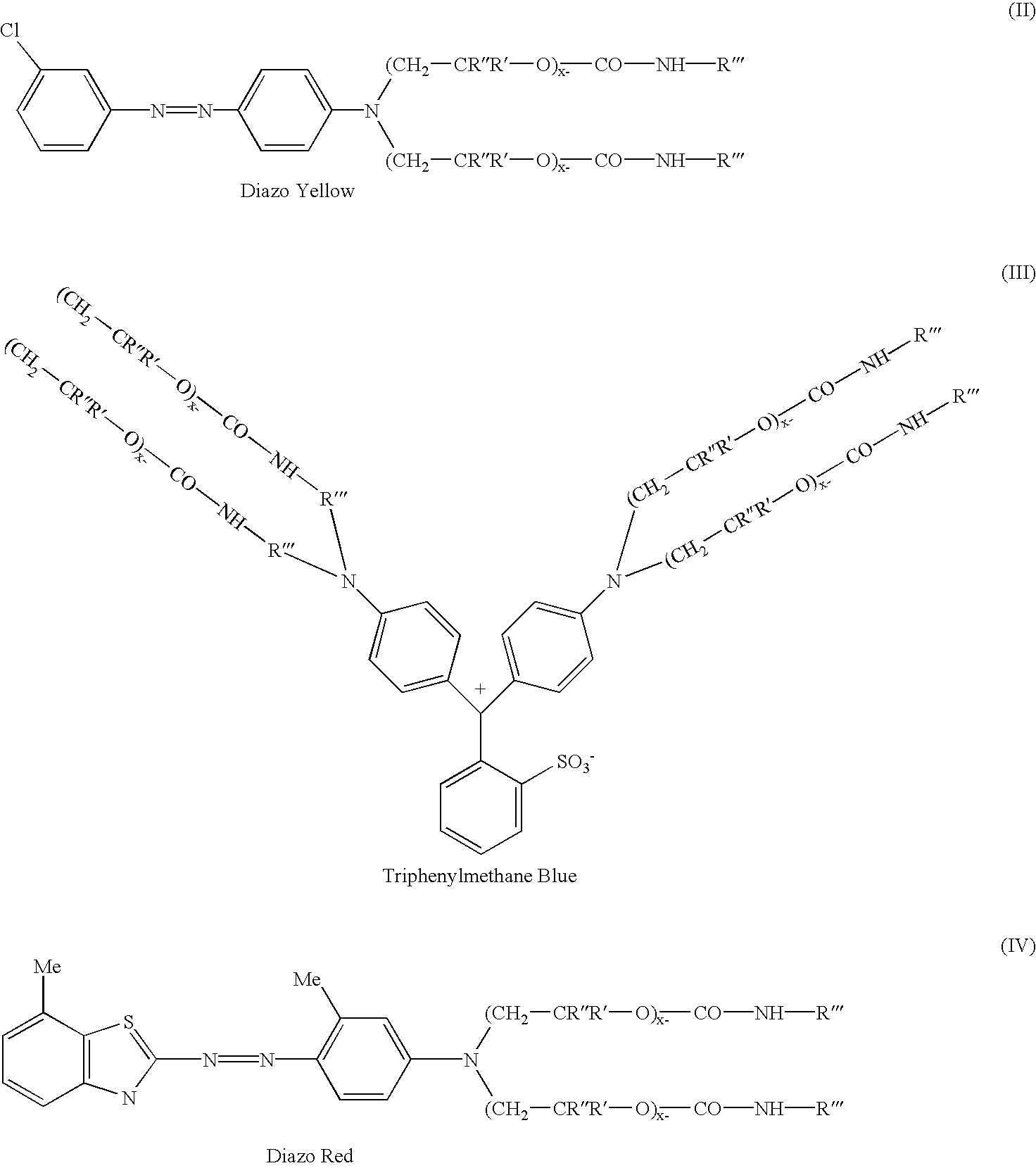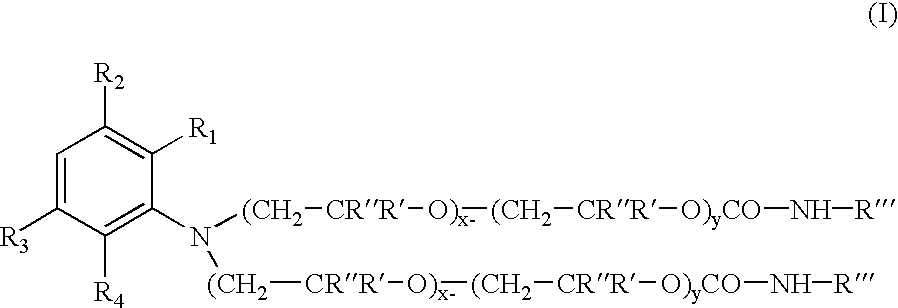Novel colorants for use within ink systems
a colorant and ink technology, applied in the field of new colorants, can solve the problems of inability to tailor wax- and/or oil-solubility or compatibility, unreactive colorants, and hydroxyl groups of such poly(oxyalkylenated) colorants and/or dyes, and achieve excellent spectral strengths, improve the stability of ink, and heat stability the effect of the entire ink system
- Summary
- Abstract
- Description
- Claims
- Application Information
AI Technical Summary
Benefits of technology
Problems solved by technology
Method used
Image
Examples
example 2
[0026] 100 parts of the polyoxyalkylene (having an ethylene oxide to propylene oxide ratio of about 1:1, and an average of about 5 moles of each alkylene oxide present thereon) substituted aniline intermediate were charged into a reactor vessel with 98 parts of octadecylisocyanate, and 2.0 parts of dibutyltindilaurate catalyst. The mixture was heated with stirring to 70.degree. C. under a N.sub.2 atmosphere. After 4.0 hours at 70.degree. C. an FT-IR spectrum of the product was obtained to insure all isocyanate functionality is consumed. The absence (disappearance) of a peak at about 2275 cm.sup.-1 (NCO) and the appearance (or increase in magnitude) of peaks at about 1740-1680 cm.sup.-1 and about 1540-1530 cm.sup.-1 corresponding to urethane frequencies, thereby confirm the conversion of the isocyanate to the urethane.
Colorant Production
[0027] The general methods of making the preferred inventive colorants are as follows:
example 3
(Diazo--Yellow)
[0028] 135 parts of 98% sulfuric acid was charged to a flask containing 452 parts of water followed by 111 parts of 3-chloroaniline and 12 parts of 2-ethylhexanol. This mixture was allowed to stir for 0.5 hr. Separately a mixture of 71.3 parts of sodium nitrite and 233 parts of water was prepared in a beaker. This was charged to the flask slowly, keeping the temperature of the contents in the flask between 0 and 5.degree. C. After the addition is complete, the contents were allowed to stir for 2 hours while maintaining a temperature between 0 and 5.degree. C. In a separate beaker, coupler was prepared by mixing 683 parts of the intermediate prepared in Example 1 with 683 parts of toluene. The diazonium salt in the flask is added to the coupler slowly maintaining a temperature <10.degree. C. After the addition is complete, the mixture is allowed to stir for 1 hour. The acid is neutralized with a caustic solution, the product washed with water, and dried. A UV / VIS spect...
example 4
(Triphenylmethane--Blue)
[0029] 1000 parts of the intermediate from Example 1 was charged to a flask containing 66 parts of p-dimethylaminobenzaldehyde and 14 parts of urea. To this mixture was charged 90 parts of muriatic acid over a 5 minute period. This mixture was allowed to heat up to 95-105.degree. C., and maintained at this temperature overnight. At the end of the hold period, the reaction mixture was allowed to cool to 75.degree. C., and 120 parts of p-benzoquinone was added. The mixture was allowed to stir for 1.5 hrs maintaining a temperature of 75-85.degree. C. The acid is neutralized with a caustic solution, the product washed with water, and dried. A UV / VIS spectrum of the bright mid range blue product shows a lambda max absorbances at 548 nm and 607 nm in toluene.
PUM
 Login to View More
Login to View More Abstract
Description
Claims
Application Information
 Login to View More
Login to View More - R&D
- Intellectual Property
- Life Sciences
- Materials
- Tech Scout
- Unparalleled Data Quality
- Higher Quality Content
- 60% Fewer Hallucinations
Browse by: Latest US Patents, China's latest patents, Technical Efficacy Thesaurus, Application Domain, Technology Topic, Popular Technical Reports.
© 2025 PatSnap. All rights reserved.Legal|Privacy policy|Modern Slavery Act Transparency Statement|Sitemap|About US| Contact US: help@patsnap.com



